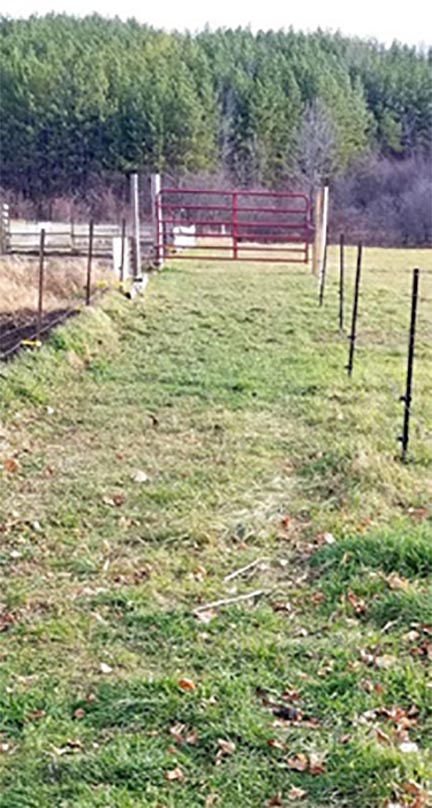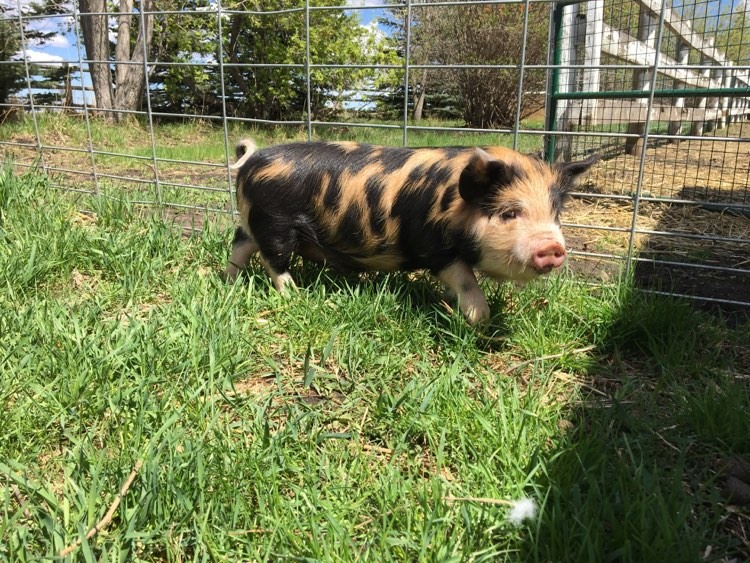Handling pigs is easiest when you use their natural herd behaviour to your advantage – as the instinct of pigs is to stay together, follow one another, and move as a group. Using appropriate handling equipment (sorting boards, shaker panels, flags) for the different sizes of the pigs will increase the ease of movement, as pigs are very receptive, subsequently its important to move pigs calmly without loud noises or yelling. Just as important is identifying when pigs are becoming stressed during handling, and back off giving them time to calm down. Personal safety is also very important when specifically handling breeding stock (e.g. boars, sows with their litters), due to their large size they require caution at all times. It is best to always bring a sort board with you when handling them to ensure your safety.
Pig Handling Tips
- Changes in ground or floor surface, temperature, and airflow may slow or stop pig flow/movement.
- Visual distractions — people, moving objects, shadows, or beams of light — may distract their attention enough to interrupt pigs flow.
- Pigs prefer well lit areas. They will move more easily from dark to light areas than the reverse.
- Daily contact with the pigs reduces their stress during handling and makes handling easier for you.
- Pigs are social animals and move better as a group rather than a single animal.
- Food can sometimes be used as motivation when moving pigs.
- Moving pigs may be easiest at feeding time, allowing you to lead them to a specific area, resulting in less stress for you and the pigs
MOVING BOARS – Pay special attention to boars as they can be extremely dangerous.

Flight Zone
Pigs have wide-angle vision (310°), with a small blind spot directly behind them (50°). Avoid being in a pig’s blind spot while moving them as this typically causes them to stop moving and turn around.
- Pigs will generally move in a direction opposite that of the handler’s movement when entering their flight zone.
- Approaching from behind tends to encourage the animal to move forward.
- Approaching from in front of a pig’s shoulder tends to encourage the pig to move the other way (e.g. backwards). However, over-pressuring the pig will encourage it to try to flee past you to get release from your pressure.
- Apply light pressure to get the pig moving, then reward the pig by backing off or releasing the initial pressure.

The pigs’ flight zone and blind spot.
Signs of Stress
Release your handling pressure on the pigs by standing still or stepping back and remaining quiet if you see the following signs of stress:
- Raised ears
- Rigid posture
- Trying to escape the handler
- Jumping on other pigs
- Piling or crowding
Distress During Handling
If you see obvious signs of stress during handling stop moving/handling the pig immediately and allow it to rest until fully recovered (15–30 minutes). The following are indicators of too much stress:
- Open mouth breathing (panting)
- Vocalization (squealing or barking)
- Blotchy skin (reddish/purple color)
- Stiffness
- Muscle tremors (animal begin shaking)
- Increased heart rate
- Increased body temperature
